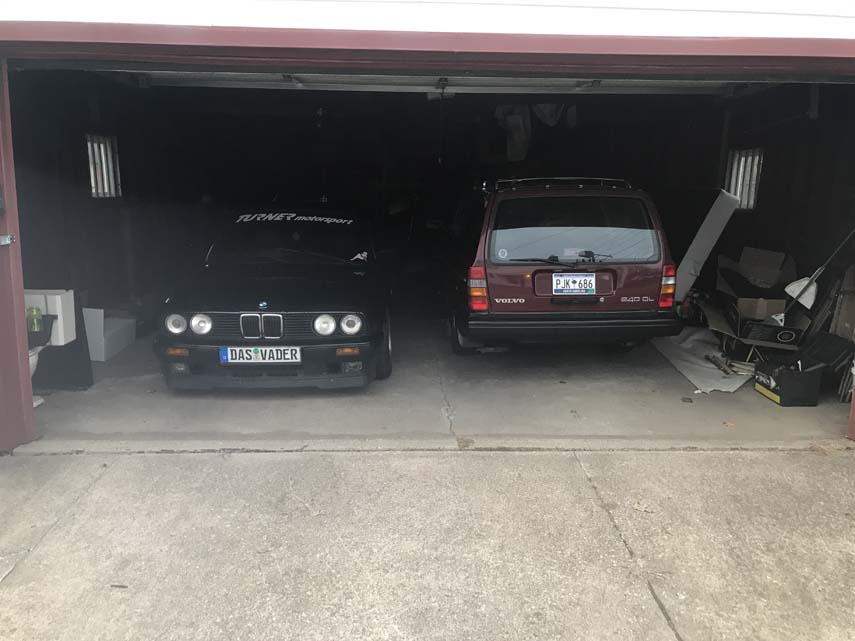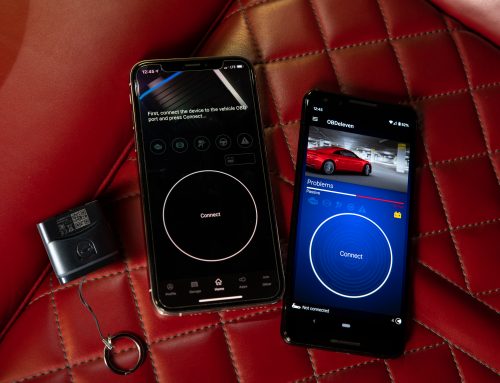Brake service is a regular part of owning any car. We don’t have to explain to you why brakes, and their condition, are important for a car’s functionality. However, one part of the brake system that is often overlooked is the fluid and brake lines. With brake lines and fluid, much of their condition is more easily diagnosed by feel rather than by sight, since you can’t visually see their degradation except in rare cases with extremely cracked, worn, and leaking hoses. Despite the forgettable nature of brake fluid and line service, it is no less important. In fact, you should flush and replace your brake fluid every two years. Today, we’re going to explain what you need to do to service your brake fluid, how you can do it by yourself at home, and give you a few options to make some upgrades while you’re in there that won’t be any more costly than replacing the parts and fluid with non-performance versions.
So why is servicing your brake fluid every two years necessary? Brake fluid, especially when exposed to open air for a long time, bonds with oxygen and turns to water. The older your brake fluid is, the more of it that has turned from hydraulic fluid into just water. If you aren’t aware, water has a much lower boiling point than hydraulic fluid, which means it picks up heat faster and retains it longer than brake fluid. When your boiling point lowers, your brake performance suffers. That’s how your pedal becomes soft, spongey, and ineffective at stopping you under hard driving conditions. This is why servicing your brake fluid every two years is critical.
Additionally, you may not notice that your pedal has become softer over time since it is a gradual change. This is why it is so easy to forget the critical brake fluid service. At the same time, you should consider upgrading to stainless steel exact-fit lines. Over time, your rubber brake lines become swollen on the inside, which restricts flow, and can reduce the clamping force of your brake calipers. They also expand under pressure, which further contributes to a soft and spongy brake pedal feel. With stainless lines, they do not expand nearly as much and have a firmer feel to the pedal. Since you need to bleed the brakes after removing lines, the perfect time to upgrade is when you plan to do your brake fluid flush.
We suggest you first gather materials. There are two ways to bleed your brakes. One requires the use of a special bleeder tool, like our quite effective Schwaben Brake Pressure Bleeder kit. The other needs no special tools but will require you to recruit a friend for help. We will cover both methods step by step here. However, we highly encourage the use of the Brake Bleeder tool to make your life easier and the bleeding procedure less time-consuming. After using one, you will not want to bleed brakes any other way.
To do your brake fluid service you need:
Schwaben Brake Pressure Bleeder
Line wrenches (usually 7mm or 8mm depending on your car)
Catch bottles/hoses
Clean towels
Jack
Jack stands (X4)
Brake fluid of your choice (we like ATE and MOTUL)
ECS Stainless Steel Exact-Fit Brake Lines (optional)

Step one:
Safely lift your car on the factory indicated jack points and place all four jack stands in designated locations to lift all four wheels from the ground. If you do not have an impact capable of removing wheel bolts/nuts with the car in the air, be sure to loosen your wheel bolts/nuts before raising the car up on the stands or on a lift.
Step two:
Remove all four wheels and pop the hood.
Step three:
Fill your Schwaben Brake Bleeder reservoir and assemble the hose with the cap fitting that will be installed on your brake fluid reservoir, located on top of the brake master cylinder. This is usually directly in front of the driver, on the brake booster, which is mounted to the firewall.
Step 3.1 (optional):
If you are replacing all your brake lines with OEM or Stainless Steel upgrades, do this now. You will need an 11mm wrench and whatever size the soft line fittings are, usually 13mm or 14mm, depending on the car.
Step 3.2 (optional):
Replace OEM lines with new OEM or upgraded Exact-Fit lines to the front calipers, rear calipers, and middle locations if necessary.
Step four:
Remove the brake fluid reservoir cap and replace it with the provided cap connected to the rubber hose attached to the brake bleeder tool and give it a few pumps to pressurize the system. You will see brake fluid travel from the container, up the line, to the reservoir. It only needs to pressurize to about 10-15PSI.
Step five:
Go to the farthest wheel from the master cylinder. This is the passenger rear wheel unless indicated differently in your car’s service manual.
Attach the catch bottle and rubber hose to the bleed nipple and hang it with the provided wire from a convenient location.
Loosen the bleed screw. You should see fluid begin to travel from the caliper into the catch bottle.

Step six:
Repeat this procedure on each wheel, moving from the farthest wheel from the master cylinder to the closest. In a LHD car, that is rear right, rear left, front right, front left. Make sure you are checking each caliper for multiple bleed screws. Some manufacturers and brake calipers have multiple bleed screws that need to be bled as well.
Step seven:
It helps to use a colored brake fluid that is different than what is already in your car. Once you see that fluid change color as you bleed the system into the catch bottles, you will know all the fluid has been successfully replaced.
Step eight:
Check the pedal pressure. If you have done everything correctly, you should now have pedal pressure with the car off and on that feels normal or better than ever if you are upgrading to stainless lines. You should now be ready for a test drive. Ensure there are no leaks at your new lines and all bleeder screws have been tightened correctly, reinstall the wheels, and go for a test drive. If you find the brakes still feel spongy, you will want to repeat the bleed procedure.
WITHOUT SCHWABEN BRAKE PRESSURE BLEEDER
If you are not using the pressure bleeder, the process is similar but requires help from a friend.

Step one:
Safely lift your car on the factory indicated jack points and place all four jack stands in designated locations to lift all four wheels from the ground. If you do not have an impact capable of removing wheel bolts/nuts with the car in the air, be sure to loosen your wheel bolts/nuts before raising the car up on the stands or on a lift.
Step two:
Have a friend sit in the driver’s seat with their foot on the brake pedal while you go to the farthest caliper from the master cylinder.
Step three:
Have the friend pump the brake pedal a few times. Make sure to stress they should not pump the pedal more than just halfway and very lightly. Once they have pumped it, they should say ‘Ready.’
Step four:
When you hear your friend say ready, go ahead and crack open that bleed screw. Your friend will push the brake pedal to the floor, and fluid will flow from the bleeder screw. To prevent a mess, you can use a rubber vacuum hose and a water bottle with a hole punched in the cap as a catch bottle that you attach to the bleed screw.
Step five:
When your friend’s foot reaches the floor with the pedal, have them say ‘floor.’ Before they let the pedal travel back up, close the bleed screw so no air is introduced to the system. Repeat this process until no bubbles or old fluid is coming from the farthest bleed screw from the master. Ensure you are filling the master cylinder reservoir continuously so it does not drop below empty and introduce air into the system.
Step six:
Repeat the process on the remaining three wheels, working towards the master cylinder. Passenger rear, driver rear, passenger front, driver front should be the order on all vehicles unless stated otherwise by the manufacturer.
Step seven:
Ensure your fluid level is topped off and correct, everything is tight, and reinstall your wheels. Test the brake pedal feel. If it is still soft, you may need to continue bleeding. If it feels firm, you are ready for a test drive. You may need to run through the procedure once more if your brakes don’t feel quite right.
As you can see, the process of upgrading your brake lines and flushing your brake fluid is not difficult. With a friend helping, that method takes a bit more time but is just as effective as using the pressure bleeder, provided you are careful. If you don’t want to worry about anything, though, and you want the most effective bleed with the least amount of headache, the Schwaben Pressure Bleeder is your best bet. If you need any further help, be sure to watch our DIY video on how to use the Schwaben Brake Pressure Bleeder for additional instructions. With that, you should have a handle on how to bleed the brakes on any vehicle!






